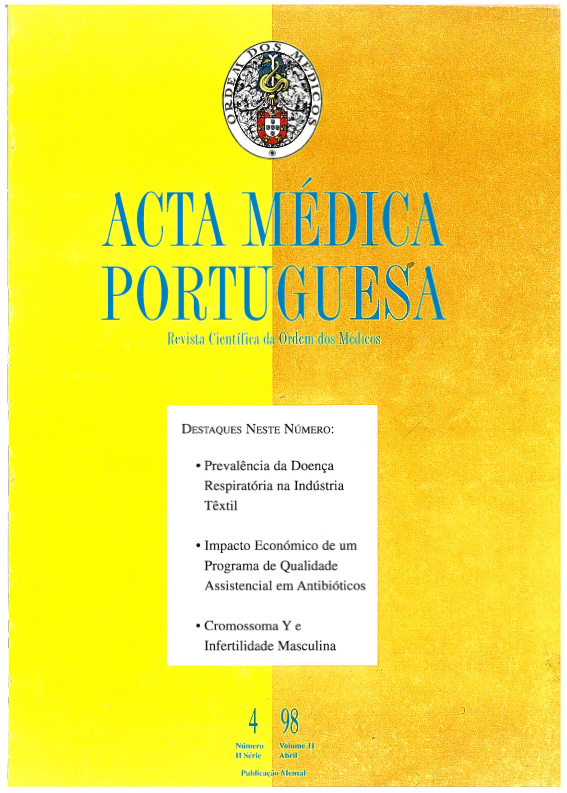Cromossoma Y e infertilidade masculina.
DOI:
https://doi.org/10.20344/amp.2239Resumo
Spermatogenesis is a complex physiological process characterized by an orderly proliferation and differentiation of germ cell types, from diploid spermatogonial stem cells to haploid spermatids, and after spermiogenesis to spermatozoa. It is known that male reproductive capacity is deficient in about one half of infertile couples. Effective treatment is available only for a small fraction of these infertile men. In most cases, the cause of male infertility is unknown. Aetiologically, male infertility may result from genetic and non-genetic causes. Among the genetic factors known to disturb spermatogenesis, chromosomal aberrations, involving autosomes and/or sex chromosomes, are well known. However, molecular genetic causes of idiopathic male infertility have been accumulating in the last years, predominantly for the Y chromosome. Localization of genes that control spermatogenesis on Yq11 was first proposed, on cytogenetic evidence, by Tiepolo and Zuffardi in 1976. Since then, many subsequent reports using molecular genetics methods have supported the initial proposal by detecting submicroscopic interstitial deletions on Yq11, present in patients with idiophatic azoospermia and a cytogenetically normal Y chromosome. Recently, four spermatogenesis candidate Y-linked genes (or gene families), RBM, DAZ, SPGY and TSPY have been cloned and characterized. In the euchromatic Y chromosome long arm three intervals--AZFa, AZFb and AZFc--were also defined. All of them may contain genes necessary for normal spermatogenesis. All the four genes have a testis-specific expression and three of them (RBM, DAZ and SPGY) code for ribonucleoproteins with a single RNA recognition motif. Candidate genes with in AZFb are some members of the RBM gene family and within AZFc are the DAZ and SPGY gene family. While AZFc deletions are associated with azoospermia or with severe oligoteratoasthenozoospermia, microdeletions involving AZFa or AZFb cause azoospermia only.Downloads
Downloads
Como Citar
Edição
Secção
Licença
Todos os artigos publicados na AMP são de acesso aberto e cumprem os requisitos das agências de financiamento ou instituições académicas. Relativamente à utilização por terceiros a AMP rege-se pelos termos da licença Creative Commons ‘Atribuição – Uso Não-Comercial – (CC-BY-NC)’.
É da responsabilidade do autor obter permissão para reproduzir figuras, tabelas, etc., de outras publicações. Após a aceitação de um artigo, os autores serão convidados a preencher uma “Declaração de Responsabilidade Autoral e Partilha de Direitos de Autor “(http://www.actamedicaportuguesa.com/info/AMP-NormasPublicacao.pdf) e a “Declaração de Potenciais Conflitos de Interesse” (http://www.icmje.org/conflicts-of-interest) do ICMJE. Será enviado um e-mail ao autor correspondente, confirmando a receção do manuscrito.
Após a publicação, os autores ficam autorizados a disponibilizar os seus artigos em repositórios das suas instituições de origem, desde que mencionem sempre onde foram publicados e de acordo com a licença Creative Commons









